Back in the 1960s and ‘70s, Japanese automotive brands started to get a stranglehold on the Australian market because they combined good design with lots of standard features at prices most Aussies could afford. They were followed by the South Koreans in the 1980s and '90s.
Ironically, many of those Japanese and Korean marques are now finding themselves under the same pressures that they applied to the Australian market decades ago, thanks to the relentless rise of Chinese brands.
One of those is Great Wall Motors, China’s largest SUV (Haval) and pickup (GWM) manufacturer. It’s been causing quite a stir in the tradie market lately with the all-new one-tonne Cannon ute. It’s a vast improvement on the Steed, GWM’s previous ute offering, with design, equipment and pricing that’s sure to grab any budget buyer’s attention. We recently put one to the test to see if it has the firepower needed to succeed in the local ute wars.
GWM UTE 2021: Cannon-L (4X4)
| Engine Type | Diesel Turbo 4, 2.0L |
|---|---|
| Fuel Type | Diesel |
| Fuel Efficiency | 9.4L/100km (combined) |
| Seating | 5 |
| Price From | $29,040 - $34,980 |
Price and Features – Does it represent good value for the price? What features does it come with?
Our test vehicle is the Cannon-L which is the mid-range model in a three-tiered range that includes entry-level Cannon and premium-grade Cannon-X. They all share one engine and transmission combination comprising a 2.0 litre turbo-diesel and ZF eight-speed automatic.

The Cannon-L is priced from only $37,990 driveaway (plus $595 for the Blue Saphire prestige paint on our example), which is outstanding value for money compared with established marques. For example, $38K will only get you into a base-grade 4x4 Mitsubishi Triton GLX extra cab-chassis and you can forget about Toyota or Ford; the cheapest 4x4 HiLux (single cab-chassis WorkMate) starts at $39,520 while the cheapest 4x4 Ranger (single cab-chassis XL) kicks in at $43,090.
So, on price alone, the Cannon-L makes similar-priced mainstream rivals look bare-boned. Highlights include body-coloured bumpers, keyless entry and push-button start, eco-friendly leather seats, LED headlights and DRLs, side steps, paddle-shifters, infotainment system with 9.0-inch touchscreen and Apple CarPlay/Android Auto, 12-volt power socket and three USB ports, rear diff lock, reversing and kerbside cameras, rear parking sensors, fog lamps with auto steering function and tyre pressure monitoring to name a few.

However, those items are shared with the entry-level model. The Cannon-L adds premium 18-inch alloy wheels with 265/60R18 tyres and a full-size spare, chrome grille/door handles/mirrors, roof rails, privacy glass, polished stainless-steel sports bar, spray-in tubliner, easy up/down tailgate with pull-out cargo step and front parking sensors.
Inside the Cannon-L adds heated front seats, leather-wrapped steering wheel, six-way power adjustable driver’s seat, auto climate control with rear a/c vents, 360-degree camera, electric anti-glare rear-view mirror and a 220-volt power outlet. You’d be up for $50K-plus to come close to matching this level of standard equipment in more established brands.
Design – is there anything interesting about its design?
The Cannon is all-new from the ground up apart from the engine, which is a heavily revised version of the Steed’s 2.0 litre turbo-diesel. Its traditional body-on-ladder-frame construction with 3230mm wheelbase results in a large and imposing vehicle, given that its 5410mm length, 1886mm width, 1934mm height and 13.1-metre turning circle is longer, wider, taller and larger than a Ford Ranger dual cab.
There’s twin-wishbone coil spring front suspension, leaf-spring live rear axle, four-wheel disc brakes and electric power-assisted steering. Off-road credentials include 194mm of ground clearance, 27 degrees approach angle, 21.1 degrees ramp breakover angle and 25 degrees departure angle.

The plush interior has a high-quality look and feel, with upmarket touches like exposed stitching along seams and a tasteful mix of contrasting surfaces. It's also very roomy with ample space for drivers and front passengers of most shapes and sizes to find comfortable positions. Rear seating is also unusually spacious for a dual cab ute with big grab handles on each B-pillar and wide entry pathways making for easy rear seat access, with ample knee and headroom when seated.
Only negative for adult-sized rear passengers is the central seating position, which requires a two-stage, two-buckle process to fasten the lap-sash seatbelt. When both buckles are clicked in, the centre passenger’s backside is skewered on either side by these buckles which is very uncomfortable. A redesign of this feature to a single buckle attachment would be welcome.
Body badges are also confusing, being a mix of GWM (as used in export markets) and its domestic brand name Poer, as symbolised by the stylised ‘P’ displayed on the grille and in other places.

Engine and transmission – What are the key stats for the engine and transmission?
The Steed’s Euro 5-compliant 2.0 litre four-cylinder turbo-diesel has been substantially revised, boosting the Steed’s 110kW/310Nm to 120kW/400Nm in the Cannon. Power output peaks at 3600rpm while torque is at full strength across a broad 1100rpm band from 1500-2600rpm.
The German-designed ZF torque converter automatic, built under license by GWM, offers all-but seamless automated shifting between eight closely-spaced ratios, or manual shifting using the steering wheel-mounted paddles. The unusual T-bar design is a bit fiddly to operate until you get used to it.

Dual range on-demand 4x4 automatically engages and disengages all-wheel drive in response to changing traction conditions. There’s also manual selection of low-ratio 4x4, three drive modes (Economy, Normal and Sport) plus a rear diff lock.
Fuel consumption – How much fuel does it consume?
GWM claims a combined consumption of 9.4L/100km and the dash display was showing 9.6 at the end of our 360km test, which included about one third of that distance at near-maximum payload and mostly in the ‘Normal’ drive mode. Our figure, calculated from fuel bowser and tripmeter readings, came in at 9.8L/100km which is excellent economy for a two-tonne-plus ute in real-world driving. You could expect a driving range of around 750-800km from its 78-litre tank.
Practicality – How practical is the space inside?
The Cannon-L’s 2100kg kerb weight and 3150kg GVM results in a genuine one-tonne-plus payload rating of 1050kg. It’s also rated to tow up to 3000kg of braked trailer but the payload would have to be reduced by a substantial 595kg to avoid exceeding the 5555kg GCM (or how much it can legally carry and tow at the same time). That would also leave only 455kg of vehicle payload, which could easily be used up by four big blokes without luggage, so do your sums if you need to tow this heavy.

The square load tub is 1520mm long and wide with a tough spray-in tubliner and four load anchorage points. However, the front ones are located less than ideally near the top edges of the tub sides and would be more useful if located closer to the floor. There’s also not enough space between the wheel housings to carry a standard pallet, but the Cannon is not alone there.
The tailgate is equipped with struts that assist in easy opening and closing and concealed within the tailgate is a handy step similar to those seen on some US pick-ups, which can be pulled out and locked in place when the tailgate is open to provide easy walk-in access to the load area.

Cabin storage includes a large-bottle holder and slender storage bin in each front door plus two dashboard storage cubbies to the right of the driver, a shallow storage tray in the centre dash-pad and a glovebox. The centre console has another storage cubby at the front, two small-bottle/cup holders in the centre and a lidded box at the back with an adjustable padded lid for driver’s elbow support.
Rear seat passengers get a large-bottle holder and smaller storage bin in each door and there are flexible storage pouches on the front seat backrests. However, the lack of a fold-down centre armrest with dual cup holders is a surprising omission in such a well-equipped vehicle, leaving passengers to hold their own cups.

The rear seat base cushion can also swing up and be stored vertically if more internal load space is required. This also reveals a large storage area beneath that spans the full width of the seat base and can hold a multitude of small items conveniently hidden from view. This is good use of space.
What’s it like as a daily driver?
The unladen ride quality is a bit on the firm side, which is more noticeable on bumpy roads when the ride becomes noticeably harsher. Even so, it’s not alone in this behaviour and common amongst unladen utes with suspensions that can carry heavy payloads.
There’s plenty of adjustment in the driver’s seat and steering wheel height, which combined with a big left footrest makes for a comfortable driving position. However, the steering is in need of refinement, as it suffers from weird fluctuations in weight and self-steering impulses which can be quite unnerving. There was an improvement with the lane-keeping assist function disabled, but it was still heavy either side of centre and generally lacking in feel.

Although the engine has been significantly improved since its Steed days, it still suffers from what feels like turbo lag (albeit less than before) from standing starts or when accelerating from low speeds. When the turbo does spool up it produces a brisk response, but the transition between these engine speeds could do with further refinement to provide a more seamless delivery.
By comparison, the ZF eight-speed automatic has impressive refinement and the smoothest of shifts but it does tend to hang onto taller gears for too long, when the engine feels like it would be more comfortable in a lower cog.
At highway speeds in top gear, the engine cruises along with only 1700rpm at 100km/h and 1800rpm at 110km/h which is also comfortably within its peak torque band. Engine and wind noise are pleasingly low at these speeds, with most cabin noise coming from the rear tyres. However, it’s not too intrusive and conversations can take place without raised voices.
What’s it like for tradie use?
We forklifted 890kg into the load tub which with driver was a snip under 1000kg and within 50kg of its peak payload rating. The rear leaf springs compressed 70mm which left only 10-15mm of static bump-stop clearance. As a result, we expected the rear suspension to be maxed-out on bumpy roads, but it coped well with no signs of bottoming-out while maintaining good all-round stability.
The engine’s 120kW/400Nm is not class-leading but it performed well on our 13 per cent gradient 2.0km set climb at 60km/h, easily hauling this load to the summit in fourth gear at 2500rpm. Engine-braking on the way down, in a manual-selected second gear, was also effective in restraining its payload on overrun. That was until it reached 4250rpm and automatically shifted up to third, to avoid potential engine damage if rpm continued to climb. These protocols are increasingly common in LCVs we've tested.

Warranty & Safety Rating
Safety – What safety equipment is fitted? What safety rating?
At this low price you can’t have everything and that includes an ANCAP rating. However, it does come with seven airbags and ISOFIX/top-tether child seat restraints on the two outer rear seat positions. There are also reversing and kerbside cameras plus a comprehensive active safety menu headlined by AEB with pedestrian and cyclist detection.
Ownership – What does it cost to own? What warranty is offered?
A compelling seven years/unlimited km warranty and five years/100,000km roadside assist but there’s no capped-price deal offered for scheduled servicing, which is 12 months/10,000km whichever occurs first.
Verdict
The Cannon is a huge advance over any previous GWM ute offering, yet it retains temptingly low pricing. There’s still room for improvement, particularly in steering and engine refinement, but for less than $40K the highly-equipped Cannon-L offers real value for budget-priced ute buyers. It also fires a warning shot about GWM’s potential as a major player in this segment, given the giant leap forward that the Cannon represents. Reminds us of those Japanese and Korean brands with their funny names which few took seriously - at first.
Pricing Guides



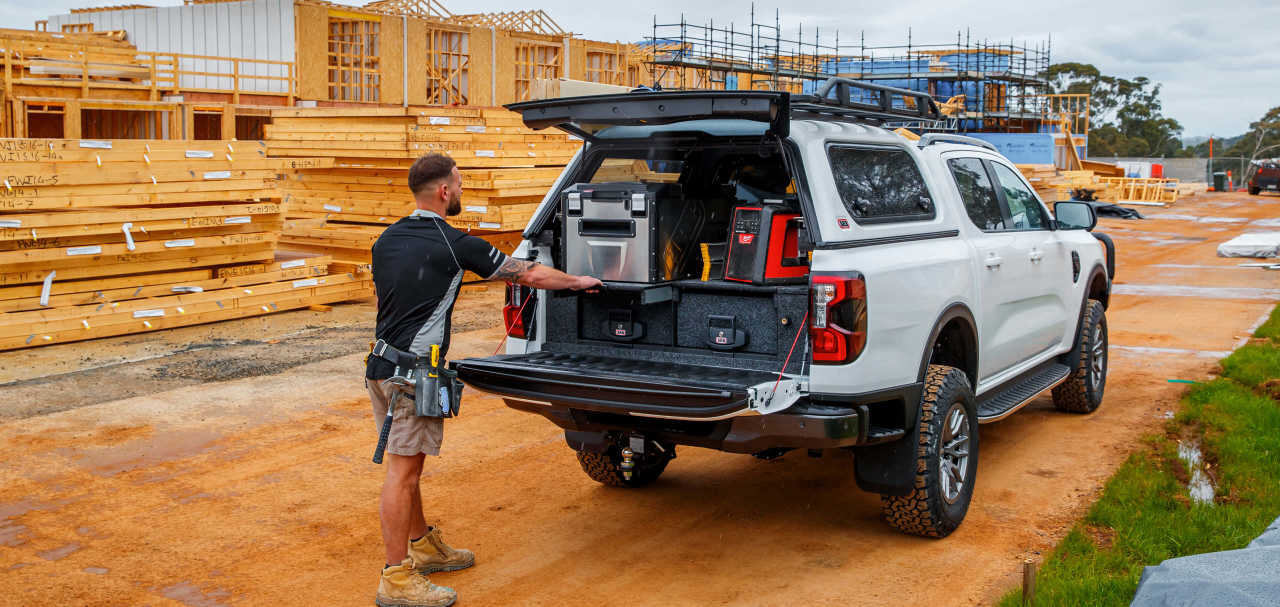

.jpg)

.jpg)



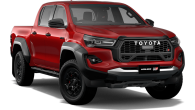
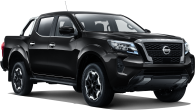

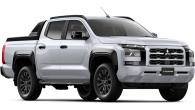

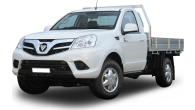
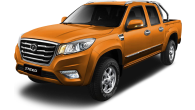
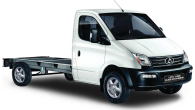

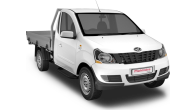


.jpg)
.jpg)
.jpg)
_0.jpg)

.jpg)





Comments